Last night while conversing with my father via email, he suggested I try something I hadn't considered before. A while back I purchased a Rigol DS-1102E oscilloscope, right about the time that their price dropped down to within $20 (USD) of the DS-1052E that so many people had been hacking an extra 50 MHz out of. Since not having to hack the device to use it at its full potential was worth an extra $20 to me, I bought the 1102E for only $399. My father, convinced by my glowing reviews of the little wonder scope, went out and bought himself one shortly thereafter.
Well, anyway, my father's suggestion (and I don't know why he didn't try this with his own scope) was to try feeding signals at frequencies above 100 MHz into the scope, and to find out just how high the little thing could go.
Well that should be easy enough to try.
And it was, since I have at my disposal an old but excellent Singer CSM-1 service monitor that can generate frequencies in excess of 550 MHz. It's probably a bit out of calibration, but I know from experience that it's no more than 10 or 20 Hz off. Not bad for a machine that's pushing 40 years old.
Back to the business at hand:
Last night I played around with it a bit, but didn't get real serious about it. Most of what I figured out last night was what trigger settings seemed to work best at higher frequencies. I also figured out that the scope becomes less sensitive to voltages above 100 MHz. The Singer puts out a consistent voltage, but I had to keep adjusting the vertical scale as I increased frequency. Here is the baseline frequency, 100 MHz. Vertical is set to 200 mV/div, horizontal is set to 2ns/div, trigger is set to single sweep:

As you can see, the Rigol has no trouble whatsoever with it. Very little change going up to 110 MHz:

And again at 120 MHz:
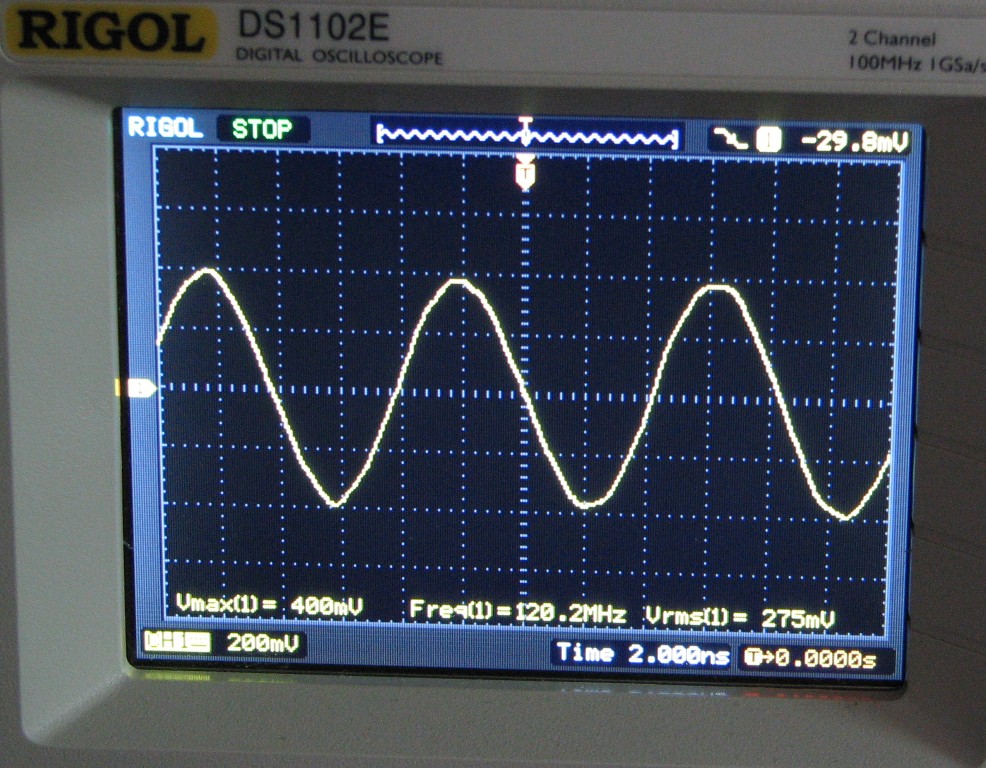
Though it is starting to become apparent that the sensitivity is dropping off, as the measured voltage has dropped from 350mV to 275mV RMS. At this point I started going up in 50 MHz increments, starting at 150 MHz:

Vertical is now set to 100 mV/div. The display is still showing a fairly good sine wave, and the scope is still counting the frequency accurately as far as I can tell. At 200 MHz, the sine wave starts looking a bit sharp:
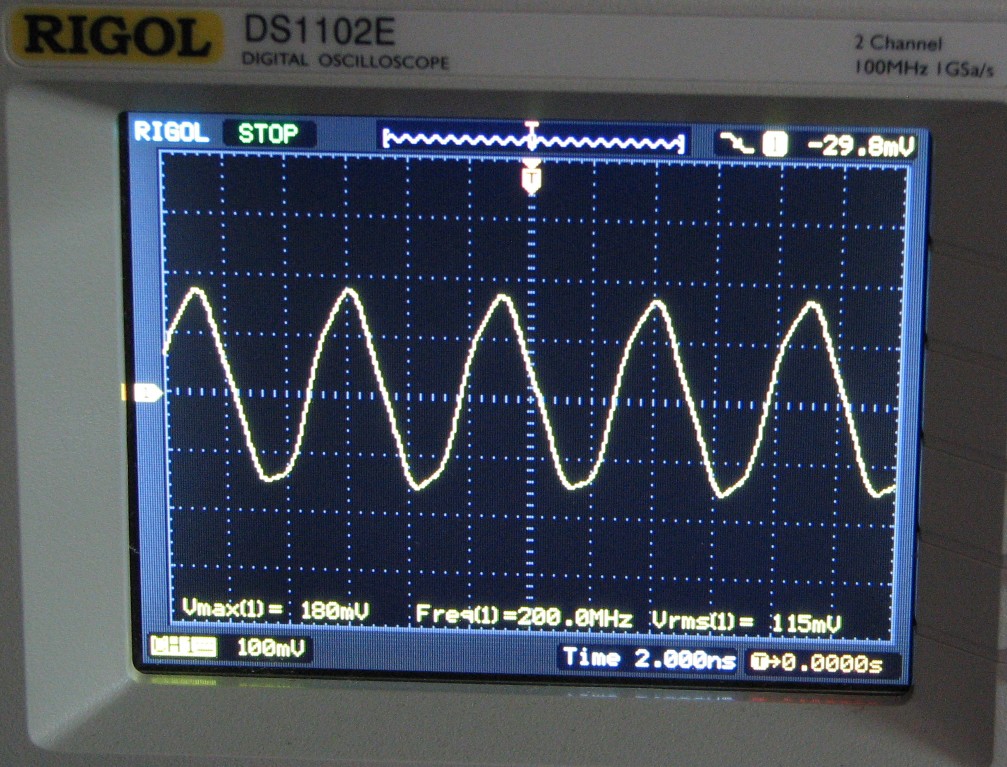
However, this and the reduced voltage sensitivity are the only real symptoms that we are now at twice the rated frequency of the scope. Now up to 250 MHz:

Vertical has now been set to 50mV/div, and the sine wave is still visible though still a bit deformed. Things are starting to fall apart at 300 MHz, triple the scope's rating:
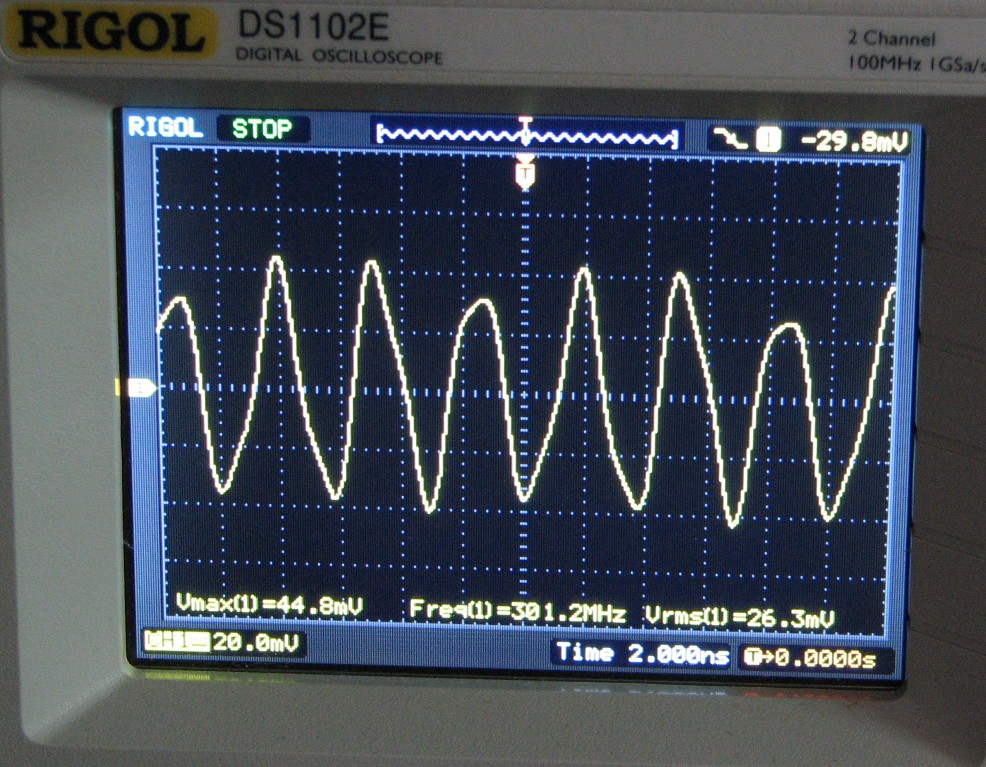
Vertical is now set to 20mV/div, so our 350mV signal is being measured at less than one tenth of its actual value. The sine wave is looking quite wonky at this point also, and I had to hit the Run/Stop button a number of times in order to get a fairly accurate frequency count. The scope is far beyond the point at which it would be useful for measuring anything accurately, but it could still be used to test for the presence of signals. At this point, I jumped up to 400 MHz:

I had to hit the Run/Stop button quite a number of times before the scope triggered with a frequency reading somewhere near the actual frequency of the signal. I suspect that noise was becoming an issue at this point, despite the fact that I was using a good quality coax cable between the service monitor and the oscilloscope. Finally, after a lot of coaxing and a lot of messing around with the trigger settings, I got this 500 MHz shot:
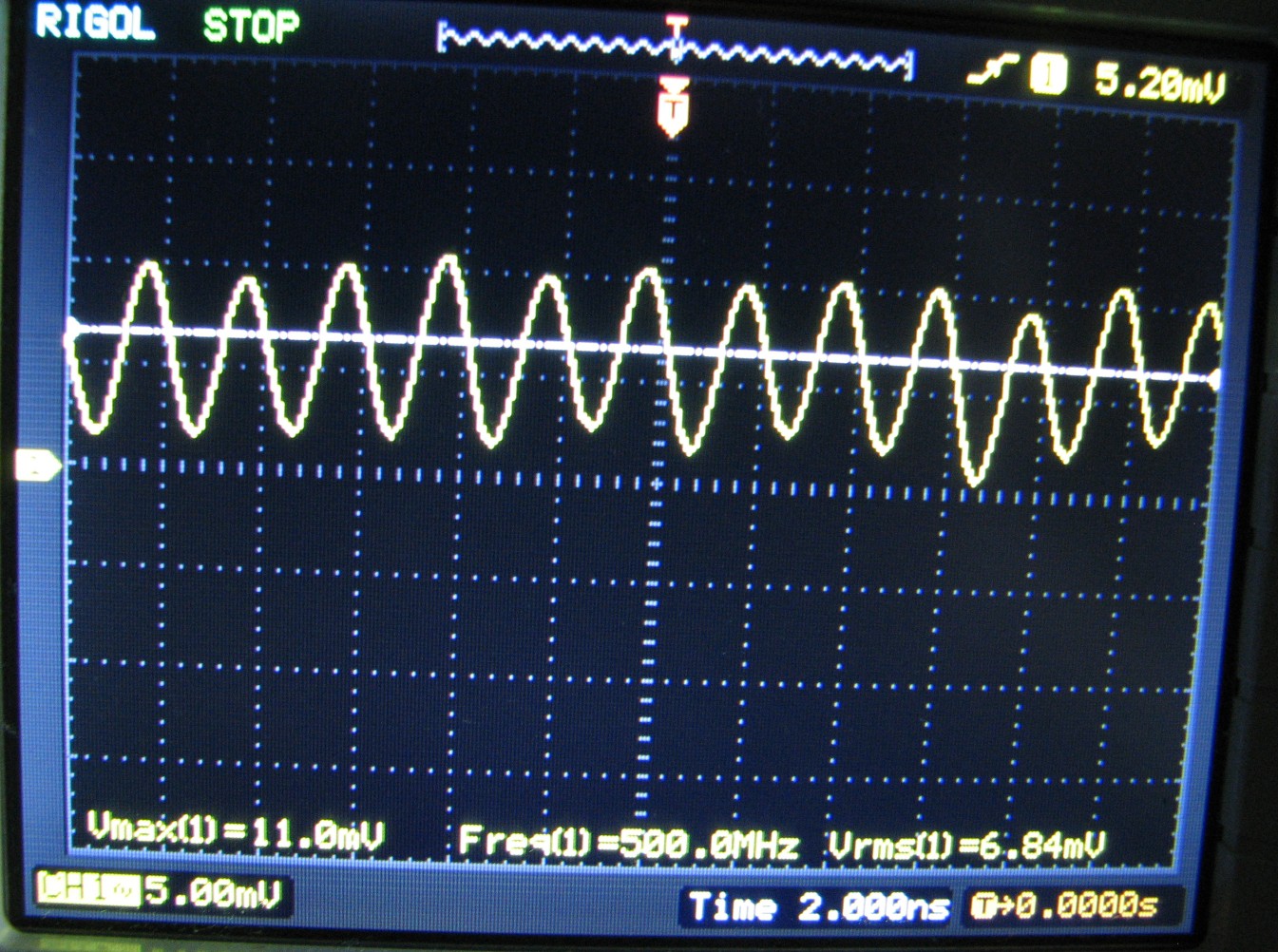
We are looking at a 500 MHz signal that is actually coming out of the CSM-1 at 350mVrms. The sine wave looks nice enough, but we are far beyond anything useful. The scope thinks the signal is only 7mV, and I had to hit the Run/Stop button many, many times to get this result. So this is more of an anomaly than a usable result.
This is the Singer CSM-1, and in case you're wondering, it is indeed made by the same company that makes sewing machines.

It's an oldy but a goody, and it weighs almost as much as I do (which...
Read more » DainBramage
DainBramage



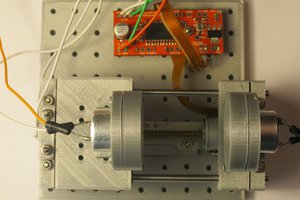
 Andrew Ferguson
Andrew Ferguson
 Ted Yapo
Ted Yapo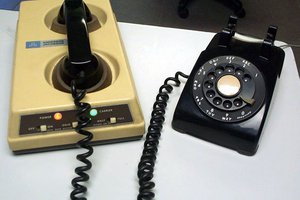
 agp.cooper
agp.cooper
This project was a remedy to most of my doubts as a newbie, many thanks for sharing.
I wonder which probe you used for measurements well above the nominal 100 MHz. I will be making measurements at about 100-200 MHz, concerning mostly with the time-domain (comparing phases from two channels) so the waveform would not be critical I suppose.
I find that the RioRand 100 MHz probes are common choice with Rigol DS1102E but I don't have a clue about how well they would do over 100 MHz. Could you please share any ideas on this?